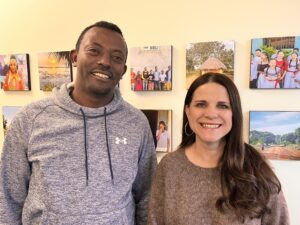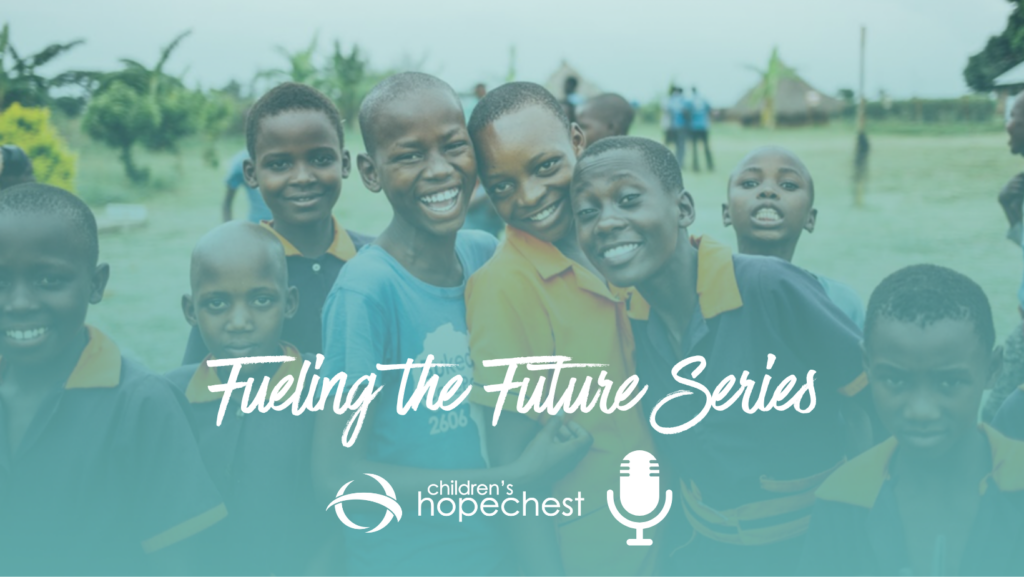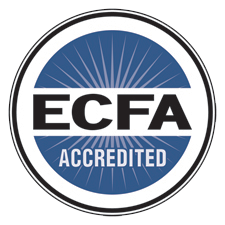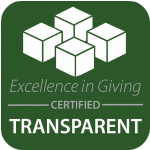Welcome back to our series Fueling the Future, where we explore the importance of investing in today’s youth and empowering tomorrow’s leaders. Today, we have the pleasure hearing from the HopeChest International Program Department! Our International Program Department (IPD) works tirelessly alongside our in-country staff to bring the HopeChest mission to life, implementing different programs for the children in our program, their parents and guardians, and the broader community.

Joining us today are Rachel Andrews, Vice President of International Operations, and Tesfa Abebe, International Operations Director. Together, they will be addressing some of the most frequently asked questions from sponsors and highlighting the importance of investing in the next generation of leaders – teenagers and young adults. Get ready for an enlightening and inspiring discussion that will leave you with a renewed sense of hope and purpose in investing in the future!
Rachel, this series dives into the very roots of Children’s HopeChest, a cause that holds a special place in your heart. Why is this important to you?
My journey with HopeChest began when I was just 17 years old, on a trip to Russia where I worked with teenagers in an orphanage. That experience ignited a passion within me to make a difference in the lives of vulnerable children. I started with the organization in an administrative role, back when we were just a team of three. I was so determined to be a part of this mission that I even begged George, the founder of Children’s HopeChest, for a job. Over the years, my role has evolved – from planning trips to Russia as a travel coordinator, to now serving as the VP of International Operations, and focusing on program development. As the organization has grown and changed, so has my role. For the past several years, my work has focused on programming!
When I went to Russia at age 17, I learned why HopeChest exists. HopeChest was founded on meeting and working with youth at their most vulnerable moment, which is between the ages of 15—18 years old. This is when they are “aging out” of the system of support and are left with nothing. Children’s HopeChest was founded to meet these teens and young adults where they’re at and walk them through what it means to be thrown into this crazy world, equipping them for success. On my trip, these youth were the same age as me. While they were about to leave the orphanage and be completely on their own, I realized, I still have the safety and support of my family and I’m not having to figure out life on my own.
Witnessing firsthand the challenges faced by these young adults as they prepare to navigate the world on their own was a life-changing experience for me. It was in that moment that I truly understood the foundation upon which HopeChest was established. Our organization was created to empower and equip young adults during this critical transition period and to provide them with the support and resources they need to succeed. This experience has remained with me throughout my career at HopeChest, and it continues to fuel my passion for our mission.
Tesfa, we’re excited to learn more about your role at HopeChest. Can you share about your background and journey to this point?
I have worked at Children’s HopeChest for over 12 years. I started at HopeChest as the first Country Director of Ethiopia. In my first role as the first Country Director of Ethiopia, I developed my passion for serving vulnerable children and their families. In my new role of International Operations Director, my focus has been on program development and ensuring that our mission is carried out with excellence. I work closely with our in-country staff to establish and implement programs that truly make a difference in the lives of those we serve!
From a program perspective, why is this series so important?
As the children in our program reach their teenage years and beyond, it becomes increasingly important to focus on youth programming rather than solely children’s programming. At this crucial stage in their lives, these young individuals need support that goes beyond the basics of nutrition and education. That’s why we provide them with life skills training, income generating activities. As the children in our program grow and mature, it is our goal to support them in their journey towards adulthood and self-sustainability.
What are some upcoming initiatives being worked on to empower young adults in some of our countries?
We are currently rolling out the Leadership and Entrepreneurship Development Programs in Uganda, Guatemala, and Ethiopia. These programs go beyond just our CarePoints and have a ripple effect throughout the entire country. They provide training in leadership, mentorship, life skills, business, and entrepreneurship. The impact of these programs is already being felt, with incredible leaders emerging from them in just the first few years of implementation. In Russia, we are continuing our mentorship programs, where older youth mentor the next generation coming through the program, creating a lasting legacy of support and empowerment.
Hot Seat Questions 
- When does a child age out of the Children’s HopeChest program?
In the US, we like to think that 18-years-old is the “cut-off” age, when children are considered adults and they are expected to fend for themselves. At Children’s HopeChest, we recognize that the transition to adulthood is not a one-size-fits-all process, and we design individualized tracks for the youth in our program. We have a range of ages for when youth graduate our program, although it’s typically between the ages of 20-25 depending on their track for education, skills training, and other factors. Our goal is to ensure that they are equipped with the necessary skills and resources to become self-sustaining members of their communities. This transition is not abrupt, but rather a gradual process that is tailored to each individual’s needs and circumstances.
- How does programming change or evolve for a young adult?
During a young adult’s developmental stage, programming is always shifting. Activities that were previously focused on playtime and hobbies, such as art, may shift towards life skills training and income-generating activities. This is an important period where we prioritize self-esteem and goal-setting, as peer pressure can unfortunately become more prevalent. Therefore, we focus on personal time management and mentorship to deepen their discipleship journey. Our programs also shift from large group activities to more one-on-one engagement, which allows for more personalized and accountable relationships. Ultimately, our goal is to apply the knowledge they have learned over the years and invest in them on an individual level to prepare them for a successful future.
- Sponsorship dollars go into 4 buckets: discipleship, education, nutrition, and health support. Why is education so important for the teens and young adults in our program?
Education is one of the most powerful tools for breaking the cycle of poverty, especially for teens and young adults in our program. It provides them with the opportunity to make a generational change in their own families and instills a sense of pride and dignity. The cost of education can be high and varies in each country, with different levels such as college, tertiary, vocational, and university. Sponsorship dollars do go towards education as your sponsored child grows older, but we also implement income-generating activities and savings groups to increase income for parents and guardians to pay for their child’s school as well. By equipping parents to pay for schooling, we are not only creating sustainability but also empowering them and fostering pride.
- When does CarePoint support stop…or does it just change?
The transition from active support at the CarePoint to more independent living is a gradual process, not a sudden stop. As teens and young adults continue to grow and develop, their needs and goals shift. We work with them to help them become self-sufficient and empowered to take control of their own lives. The support we offer changes and adapts to meet their changing needs, such as providing financial assistance for transportation or educational expenses. When they graduate from our program, it’s a major milestone and cause for celebration. However, we never truly stop supporting them. We remain a source of guidance and encouragement as they navigate the challenges of adulthood, always ready to offer a helping hand when they need it most.
Find out how you can empower a young adult.
 Rachel Andrews and Tesfa Abebe are the dynamic duo behind Children’s HopeChest’s International Program Department. Rachel, who serves as the Vice President of International Operations, is responsible for the strategic and operational management, engagement, and development of HopeChest’s Community-to-Community model in the countries the organization partners with. She is based in Colorado Springs and is frequently on Zoom or phone calls with in-country staff, reviewing management team reports, budgets, and proposals, as well as facilitating training overseas. Rachel also travels extensively to our overseas offices and CarePoints across the globe to build relationships and evaluate program effectiveness. Tesfa, on the other hand, is responsible for overseeing the implementation and management of our programs at the CarePoints in each country. He works closely with our in-country staff to ensure that our mission is carried out with excellence and our programs make a real difference in the lives of those we serve. When Tesfa has a day off, he loves spending quality time with his family, playing with his kiddos at home or taking them outdoors to enjoy the beautiful world around us. It’s worth mentioning that he met his wife at Children’s HopeChest, which makes our mission even more meaningful to him!
Rachel Andrews and Tesfa Abebe are the dynamic duo behind Children’s HopeChest’s International Program Department. Rachel, who serves as the Vice President of International Operations, is responsible for the strategic and operational management, engagement, and development of HopeChest’s Community-to-Community model in the countries the organization partners with. She is based in Colorado Springs and is frequently on Zoom or phone calls with in-country staff, reviewing management team reports, budgets, and proposals, as well as facilitating training overseas. Rachel also travels extensively to our overseas offices and CarePoints across the globe to build relationships and evaluate program effectiveness. Tesfa, on the other hand, is responsible for overseeing the implementation and management of our programs at the CarePoints in each country. He works closely with our in-country staff to ensure that our mission is carried out with excellence and our programs make a real difference in the lives of those we serve. When Tesfa has a day off, he loves spending quality time with his family, playing with his kiddos at home or taking them outdoors to enjoy the beautiful world around us. It’s worth mentioning that he met his wife at Children’s HopeChest, which makes our mission even more meaningful to him!





